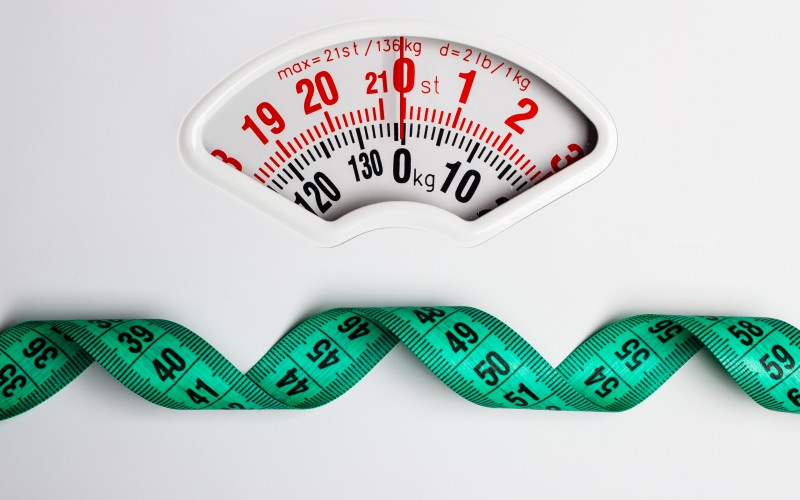
If you haven’t read Part 1 of this series, The Basics of Macronutrient Tracking, hit that up first before giving this a go. In this article, I want to go into more detail about macro tracking for fat loss specifically and where to begin.
Determining Your Macros and Calories
I get this question all of the time: “How much should I be eating if I want to lose body fat?” The answer is different for everyone and requires a number of follow-up questions. It is not as simple as you might think; however, there are a few options and good places to start if this is your question. There are two methods that I suggest people use to figure out where they should be calorie- and macronutrient-wise for fat loss.
RECENT: The Basics of Macronutrient Tracking
Option 1: Track and Manage
Option 1 is typically more accurate but definitely takes more time and tweaking. I would first suggest logging your food for three days (or longer, ideally) to see what you are actually eating now on average. Track the amounts (don’t eyeball) and track the macros, including fiber and calories. Take the average of all of these, and this is roughly your starting point.
Additionally, log the activity you perform typically in a week. Workouts, cardio, etc. Record how long in duration, intensity, how many sets and reps, all of that info.
From here, we can assume that the average caloric intake you logged, as well as your average activity level, is MAINTAINING your weight.
Let’s take it further and give an example to make this even easier. Let’s say a 150-pound woman tracks her food for three days and comes up with:
- 75 grams of protein
- 300 grams of carbs
- 50 grams of fat
- 22 grams of fiber
- Calories: 1,950
In order to achieve fat loss, we need to produce a deficit in some fashion, assuming this caloric and macro level is maintaining her weight currently. The first thing I would suggest is to manipulate her macros and calories first but keep her activity level the same. Do not manipulate both at once. This is a big mistake people often make. They want to jump out the gate with their foot hitting the pedal to the metal. While the intentions are good, our bodies are not stupid and will adapt and plateau.

ra2studio © 123rf.com
So now the question becomes “How many calories should she drop?” But before we answer that, let’s adjust her macronutrient distribution a bit. Let’s start with protein. For fat loss clients, I like to have them at 0.8 to 1.0 grams of protein per pound of body weight per day.
For this particular client, I would suggest starting her protein intake at around 120 to 150 grams per day. I personally like this range because there is a lot of research backing it up from a standpoint of fat loss and muscle retention, but it is also easy math for clients to understand.
From there, we can take a look at fats and carbs for the remainder of her calories. By bumping her protein up quite a bit, I will drop her carbs a bit but keep fat where it is to get her into a small deficit. So for this particular client, I would start her deficit at:
RELATED: Super Bowl Fat Loading Feast Options
- 150 grams of protein – increased protein
- 175 grams of carbs – decreased carbs
- 50 grams of fat – fat remains the same
- 20-25 grams of fiber – fiber remains the same
- Calories: 1,750 – 200 calorie drop
This was just a simple macro flip essentially between protein and carbs with a small caloric reduction. So again, without touching her activity level yet (assuming she is regularly active and already hitting the gym a few times a week), I would start her here and track weekly to see how she responds.
With clients, I look for a fat loss rate of one to two pounds a week at most really, anything more and I will usually add a small number of calories back in at first. The reason for this is because when it comes to fat loss you want to do the least to achieve the most. If you drop calories too much and too quickly, you will plateau faster, then go lower in calories to continue achieving results. It’s not a good situation. Understanding metabolism and adaption is really crucial in this process to make sure you get the most bang for your buck.
On the other hand, if a few weeks go by and her scale weight is remaining stable, I would take a look at her activity level to see if we can make changes there before dropping her calories again. Rarely do I manipulate both simultaneously; I usually flip flop between the two. I will say, for fat loss clients, I like to manipulate calories more often than activity level, simply because our bodies adapt to activity much faster than reducing calories.
To make things even simpler during your fat loss phase, I suggest keeping your daily protein intake pretty much the same throughout and to only manipulate carbs and fats. Keeping your protein high throughout will prevent muscle wasting and only having to manipulate two macronutrients is much easier.
Option 2: Quick Equation
This method is decent for beginners, but depending on a few variables such as age, gender, metabolic rate, etc., it can be a bit off at times. For example, I find that this method works relatively well for women but can drastically underestimate caloric needs for men. So, that is something to consider.
READ MORE: How to Avoid Obesogens
Quick Fat Loss Equation:
Body weight (in pounds) x 12
From our first example, this equation would put her at:
150 x 12 = 1,800 calories
As you can see, it is pretty close to what we came up with within Option 1 as well. The one component that Option 1 takes into account is what she has been eating currently, which is really important. While both methods can work, I prefer Option 1 to ensure more accuracy and progress over time, especially with men since their caloric maintenance is typically much more vast.

anetlanda © 123rf.com
Fat Loss Progression How-To
Now that we have discussed how to create a fat loss starting point, how do you progress over time? This will vary from person to person largely, but I will discuss some key steps in managing your progress.
1. Take weekly quantitative and qualitative measurements.
As you go through your fat loss phase, I highly encourage you to take at least two forms of measurements. I personally like one quantitative measure, such as the scale or circumference, as well as one qualitative measure, such as progress pictures. This way you can really get the entire story of what is going on and make changes accordingly. Do not rely on just one measurement, as using only one will not provide you with enough information.
2. Stay consistent before making changes.
Be consistent with your macro tracking for at least two to three weeks before making changes. Rome was not built in a day, and neither was your physique. It will take some time to get used to consistency, and you will surely make mistakes (even if on accident), so give yourself time following structure before changing anything. Do not bite the bullet here. Be patient.
Also, if you are losing one to two pounds a week, then there is no need to change anything until that progress stalls. Which it will, eventually. There is no need to drop calories if you are still seeing progress where you are. Again, be patient.
If you are consistently losing one to two pounds a week, and then a few weeks go by where the scale and pictures are the same, THEN make a change. And a small change. Nothing crazy. This will get into my point below.
3. Fat loss is not linear, and neither is caloric progression.
When dropping calories over time, you need to keep in mind you can only drop so many before your body will fight, and you will feel like shit. So again, that is why slow caloric progression is so important and beneficial for long-term fat loss success. But we also have to keep in mind that dropping calories or adding in activity is not the only way to keep fat loss going. Sometimes we need to transition into a diet break, refeed method, etc., to give our bodies time off from dieting in order to reduce metabolic and potentially, hormonal stress, and simply maintain. Remember through your fat loss journey, maintenance at certain points is progress and normal. We cannot live in a deficit 24/7, 365 days a year.
Fat loss has to come in phases, and maintenance has to come in phases. I wrote an article on diet breaks that applies to this concept and how it works. If you have been dieting for a while, and the scale isn’t budging, and you’re sluggish through training and lacking motivation, it may be time for a diet break.
I hope this article sheds some light and clarity on where to begin tracking macros within a fat loss phase. If you have any specific questions on fat loss caloric progression or macro tracking, leave a comment below! Happy tracking!
Header photo courtesy of gstockstudio © 123rf.com










